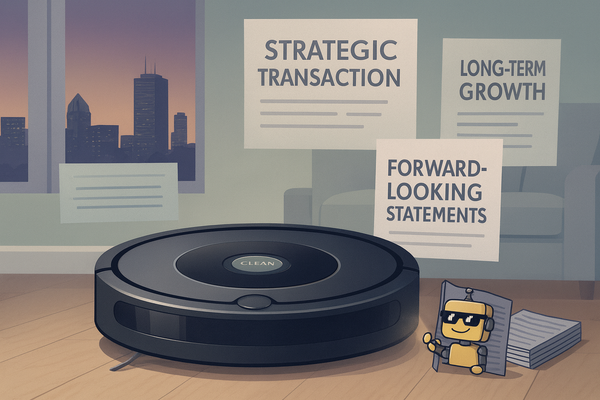UTime’s New Smartwatch Takes Your Blood Pressure — And Maybe the Pulse of the Wearables Market
UTime Limited (NASDAQ: WTO) launches a certified smartwatch with real blood pressure monitoring — a practical, no-AI-needed health tech breakthrough from Shenzhen.

It’s a sleepy Tuesday in tech land — the kind where the biggest headline is someone’s new widget that promises to make your wrist slightly more interesting. But today, UTime Limited decided to crank the pressure — literally — by launching a smartwatch with built-in blood pressure monitoring.
Yes, a real one. Not a vague “wellness estimate” or a “beta feature” that needs cloud syncing and prayers. This one’s an honest-to-goodness medical-grade device, complete with a China NMPA Class II Medical Device Registration Certificate, which sounds just official enough to make even your Apple Watch blush in uncertified shame.
A Smartwatch That Actually Does Something Useful
Let’s get this out of the way: UTime’s new watch isn’t trying to be your AI therapist, crypto wallet, or 8K video camera. It’s a health tool first, a gadget second. Using the oscillometric method (a fancy term for the same principle that powers the cuff at your doctor’s office), the watch features an integrated micro air pump and pressure sensor that can actually measure blood pressure on your wrist.
This isn’t just another speculative “it’ll come in a software update” promise. It’s here. It works. And it’s certified.
To top it off, the device also tracks heart rate, blood oxygen, sleep, and multiple sports modes, and even tosses in voice reminders for those of us who need a gentle robotic nudge to move. Essentially, it’s like your smartwatch grew a conscience — and a tiny air compressor.
A Refreshingly Low-Hype Launch
What’s truly remarkable about this launch isn’t just the tech — it’s the tone.
In a world where every press release screams “AI-powered!” or “built on blockchain!” or “metaverse-ready!”, UTime has quietly said, “Hey, we made a better watch.” That’s it. No buzzwords. No tortured metaphors about the “future of quantified existence.” Just an honest product for people who want to keep tabs on their health without wearing a prototype for the apocalypse.
Even CEO Hengcong Qiu kept things understated, saying, “We focus on integrating practical health monitoring functions with mobile smart devices.” Translation: We’re not here to sell vibes. We’re here to make sure your blood pressure isn’t trying to kill you.
And honestly? That’s refreshing.
A Moment for the Mid-Tier Marvels
UTime (NASDAQ: WTO) isn’t exactly a household name in the West. It’s one of those quietly competent Shenzhen manufacturers that make the devices you’ve probably used but never realized. Yet, this launch shows a savvy awareness of where the wearables market is going: practical, regulated, and medically meaningful.
For years, the space has been dominated by lifestyle trackers — flashy, app-heavy, AI-aspirational gadgets that promise to “empower your wellness journey” while mostly counting steps and sending you to bed with guilt. But real health tech — certified health tech — has been harder to come by.
With UTime entering the fray, expect more competition at the intersection of affordable hardware and credible health monitoring. Think of it as the anti-Apple approach: less ecosystem lock-in, more real functionality.
The Blood Pressure Battle
Blood pressure tracking is the holy grail of wrist wearables. Samsung has tried it. Huawei has tried it. Even Apple keeps hinting at it. But most consumer devices rely on rough estimates, indirect readings, or require you to calibrate with a traditional cuff every few weeks — which sort of defeats the point.
UTime’s use of the oscillometric method (the same used in actual medical monitors) puts it in a small but growing club of devices that are legitimately measuring pressure, not just guessing it from your pulse. Combine that with an actual medical certification, and you’ve got something that might just nudge the big players to step up their game — or at least stop pretending they’ve “solved” it in PowerPoint slides.
Comfort Meets Competence
The company emphasizes that the watch balances “wearing comfort with daily practicality,” which sounds like marketing-speak until you realize they actually had to fit a micro air pump inside a wrist device. That’s not trivial. If UTime’s engineers managed to make it light, quiet, and unobtrusive, they deserve a round of applause — and maybe a blood pressure check of their own.
And while there’s no word yet on battery life or price point, UTime’s reputation for cost-effective products suggests it won’t cost as much as a small car, unlike some “premium” wearables. Expect it to be the kind of device that sneaks into the market quietly, wins a few fans in the healthcare and eldercare sectors, and suddenly becomes the default choice for people who don’t want a $400 step counter pretending to be a doctor.
UTime’s Bigger Play
Behind the polite corporate phrasing, UTime’s strategy is clear: go practical, go global. By moving deeper into the health-tech space — and getting certified in the process — they’re positioning themselves for the next wave of wearables that need to actually work to compete.
And it’s not hard to imagine where this goes. Add FDA or CE certification, partner with a few telehealth platforms, and suddenly UTime becomes the hardware provider behind half the “remote health monitoring” startups popping up on Product Hunt next year.
This is how Shenzhen wins — not by out-hyping Silicon Valley, but by quietly shipping the future while everyone else is still naming their AI mascot.
The Bottom Line
UTime’s new smartwatch won’t write your emails, generate your midjourney prompts, or pretend to be your life coach. What it will do is accurately measure your blood pressure, tell you when you’re stressed, and maybe help you live long enough to buy next year’s model.
In 2025, that feels like progress.




